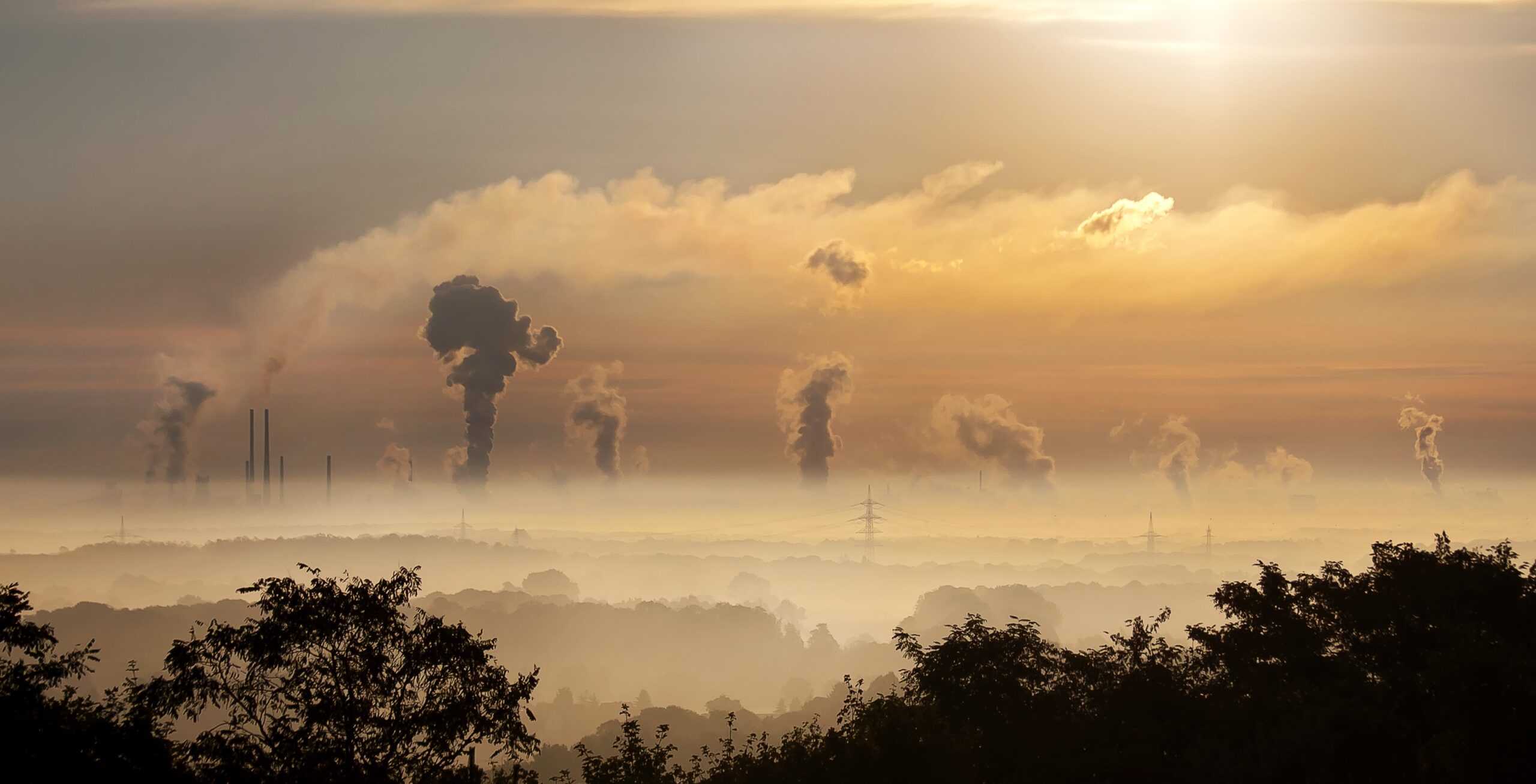Carbon Credits and Carbon Offsets are a unique way for corporations to reduce their carbon footprint. In this review we will discover the Best Carbon Credits ETFs on the market in 2022!
A carbon credit gives companies the right to emit a measured amount of greenhouse gasses (GHG). Credits are then exchanged in the open market, often referred to as cap-and-trade.
Carbon credit ETFs have been on the rise in recent years. KraneShares Global Carbon Strategy ETF (KRBN) has more than doubled since it’s inception (7/30/2020).
But are carbon credits morally just and how can individuals benefit from the rise of Carbon Credits ETFs? Below we will discuss the history of carbon credits, carbon offsets, and if they’re still a good investment in 2022.
Best Carbon Credits ETFs for 2022
- KraneShares Global Carbon Strategy ETF
- iPath Series B Carbon ETN
- KraneShares European Carbon Allowance Strategy ETF
- KraneShares California Carbon Allowance Strategy ETF
- Horizons Carbon Credits ETF
- iShares MSCI ACWI Low Carbon Target ETF
- BlackRock US Carbon Transition Readiness ETF
- SPDR MSCI ACWI Climate Paris Aligned ETF
- Wisdomtree Carbon ETC
- KraneShares Global Carbon Offset Strategy ETF
- Desjardins RI Canada Multifactor – Low CO2 ETF
- BlackRock World ex U.S. Carbon Transition Readiness ETF
- Carbon Strategy ETF
- BlackRock Future Climate and Sustainable Economy ETF
- V-Shares MSCI World ESG Materiality and Carbon Transition ETF
- VanEck Low Carbon Energy ETF
- KraneShares Global Carbon Transformation ETF
Carbon Credits ETFs List 2022 (ETF/ETN/ETC Comparison)
Updated as of 10/29/2022
History of Carbon Credits
So you might be wondering, what is the purpose of carbon credits and when were they first introduced? The purpose of carbon credits is to provide corporations a means to emit GHG, in an efficient way. The idea of putting a ‘price on carbon’, was used as a means for companies to emit only a certain amount of GHG. This was in hopes that their carbon emissions would be both sustainable and gradually decline over time.
But this is not always the case and carbon credits have caught a lot of slack over the last few years. Climate activist Greta Thunberg, believes that many corporations buying and selling carbon credits are greenwashing. This means that companies are spending more time marketing themselves as environmentally friendly, rather than taking action.
This has been a growing phenomena among large corporations. Companies that have been accused of ‘’greenwashing’’ include; Coca Cola, Volkswagen, Exxon Mobil and Starbucks.
What is Cap and Trade?
The cap and trade system is designed to reduce carbon emissions. The cap on GHG emissions that drive climate change is a firm limit on pollution. It is designed to get more strict overtime.
The trade aspect is a market that allows companies to buy and sell carbon allowances up to a certain limit. When corporations trade carbon credits, it allows them to cut costs while reducing their GHG emissions.
How Does it Work?
The cap and trade system is being used in countries all around the world. Governments will issue a limited number of carbon allowances to corporations. These carbon allowances permit the companies to emit a certain amount of GHG emissions. The total amount would also be referred to as the ‘’cap.’’
The government then distributes these allowances either for free or through an auction. Companies are also able to buy, sell and trade carbon allowances. However, they must ensure that they do not exceed their cap.
Trading carbon credits allows for more flexibility for companies who want to reduce their carbon footprint. It also puts pressure on companies who emit more carbon, further incentivizing them to cut emissions. Furthermore, carbon trading provides a range of additional benefits. This can include cleaner air, improving resource efficiency, ensuring energy security, and creating jobs.
History of Carbon Offsets
The first carbon offset project was started in 1989, by Applied Energy Services, an American electric power company. It was an agri-forest project located in Guatemala, with the goal to offset their coal-powered plant in Connecticut.
This project occurred 3 years before the Framework Agreement on Climate Change of Rio in 1992, and 8 years before the signing of the Kyoto Protocol of 1997.
1992 – The Framework Agreement on Climate Change of Rio:
The Framework Agreement on Climate Change of Rio was a framework signed by 154 nations on June 12th, 1992. The goal of the framework was to reduce atmospheric GHG with the goal of ‘’preventing dangerous anthropogenic interferences with the Earth’s climate system.’’ This framework was very important in spreading awareness of the adverse effects of climate change. This was when more industrialized economies would begin to explore carbon offsetting and its benefits.
1997 – The Kyoto Protocol:
The Kyoto Protocol was a national treaty that extended the 1992 UNFCCC. The treaty had 192 parties involved and was adopted on December 11th, 1997. The goal of the Kyoto Protocol was to limit and reduce GHG emissions in industrialized economies. The convention asked countries to adopt policies and mitigation measures to stay below their emission targets, while reporting periodically. Policies that many of the countries adopted included carbon offsetting measures.
2005 – The EU Emissions Trading Scheme (EU ETS):
- Emerged in 2005 as the first and biggest carbon market, also referred to as the ‘’cap and trade’’ system.
- The scheme includes more than 10,000 installations, covering around 40% of GHG emissions in the EU.
- The EU ETS covers energy-intensive sectors including oil refineries, steel work, the production of iron ore, metals, aluminum, and more.
- With the introduction of the Market Stability Reserve in 2019, the EU was able to reduce total GHG emissions by 9%, with a 14.9% reduction in electricity and heat, and a 1.9% reduction in industry.
As a part of the European Green Deal, the EU and parts of the Western world plan to hit carbon neutrality by 2050. Under a 2020 Impact Assessment in September commissioned by the EU, they set a goal to reduce net GHG emissions targets to 55% by 2030.
Best Carbon Credits ETFs: Final Takeaway
Investing into carbon credits carries risk. The most common way for individual investors to gain access to the carbon credit market is through ETF structures like KRBN, KEUA, and KCCA. You can also invest into ETNs like GRN, however, you will not own any of the assets in the fund.
An ‘’Exchange-Traded Note’’ also referred to as an ETN, is a senior unsecured promissory note issued by a bank. If you were to take this route, it may carry extra risk as the bank does not buy or hold any of the underlying securities. The credit risk of the note is therefore carried from the issuer to the investor.
Carbon credits and the ‘’cap and trade’’ system have become increasingly a part of countries’ mandate to reduce GHG emissions. During 2021, interest in carbon credit ETFs have soared. However, the carbon credit market does have its flaws.
If you’re a risk averse investor then carbon credit ETFs may not be right for you. Investors should always proceed with caution and should not invest more than they can afford to lose.
Frequently Asked Questions (FAQs)
What is the Best Carbon Credit ETF?
The Best Carbon Credit ETF is KraneShares Global Carbon Strategy ETF (KRBN).
Is there a Carbon Capture ETF?
The Best Carbon Capture ETFs are KraneShares Global Carbon Strategy ETF (KRBN), KraneShares Global Carbon Transformation ETF (KGHG), and Horizons Carbon Credits ETF (CARB).
How do I Invest in Carbon ETFs?
The easiest way to invest in Carbon Credits is through Carbon ETFs like KraneShares Global Carbon Strategy ETF (KRBN). You can also invest into Carbon Credits through ETN structures like iPath Series B Carbon ETN (GRN).
Disclosure: The author holds no position mentioned in this article. Freedom Stocks has a disclosure policy.









